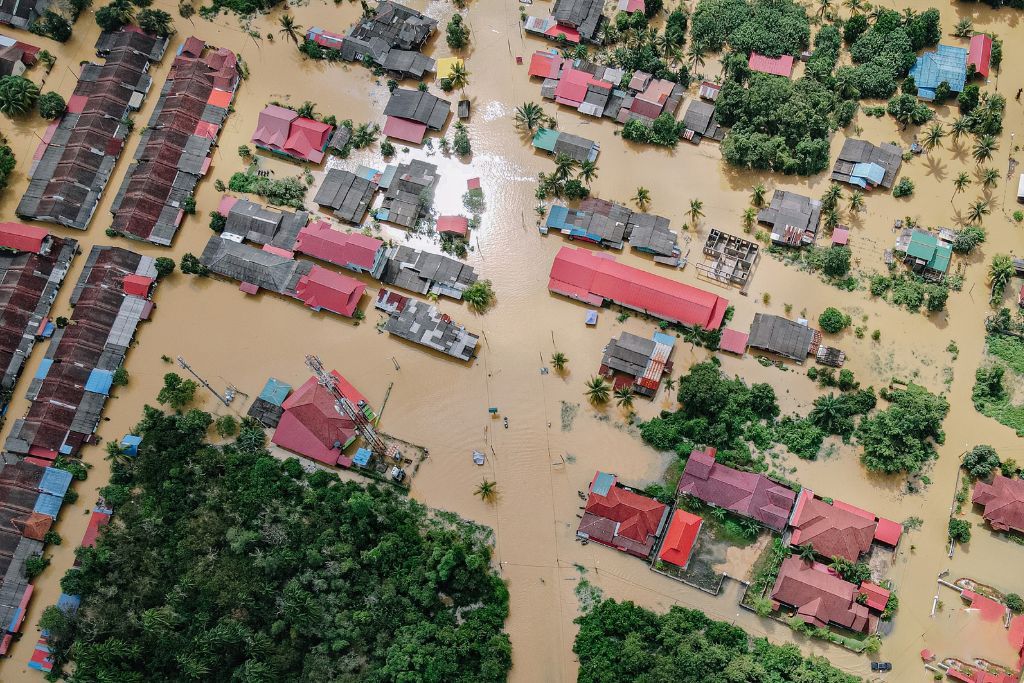In the past two weeks, northeast India’s Assam and Meghalaya states and low-lying parts of Bangladesh have experienced some of the worst floods in more than a century. The erratic rains that have hit these already vulnerable areas arrived earlier than expected and were much stronger than in recent years, likely as a result of climate change.
—
Monsoon season in South Asia kicked off in the worst way possible. For more than two weeks, low-lying parts of Bangladesh as well as Meghalaya and Assam in northeast India have experienced erratic rains that have triggered unprecedented floods, killing dozens and displacing millions of people. About 80% of the areas in Sylhet and Sunamganj districts in Bangladesh have been reportedly inundated and the situation is likely to worsen in the coming days.
Heavy rains and floods have killed at least 69 people across both South Asia’s nations, while an estimated 9.5 million people have been marooned. “People are without food. They are not even getting drinking water since floodwater submerged all tube-wells,” Abu Bakar, 26, a resident of hard-hit Sunamganj district in northeastern Bangladesh, told Reuters on Wednesday.
These areas are no strangers to flooding. During the South Asia monsoon season between June and October – marked by frequent and heavy rainfall – rivers’ banks in Bangladesh’s low-lying areas burst frequently as they cannot handle the amount of water pouring out of the Himalayas, triggering devastating floods. However, these usually take place later in the year when monsoon rains are well underway.
Scientists agree that climate change is a key factor behind the strong and early rains that these areas are experiencing. As a result of global warming, temperatures in Bangladesh have increased by at least 0.5C since 1976 and monsoon patterns have shifted in recent decades, becoming not only stronger but also more difficult to predict. Consequently, the rain expected to fall in a year is instead falling in a space of just a few weeks. This yeas, the northeastern Indian state of Assam received twice its average June rainfall in just the first three weeks of the month. In Meghalaya, the rain was three times its monthly average in the same period.
In Bangladesh, one of the world’s most vulnerable to climate change, an estimated 3.5 million people are at risk of river flooding every year. The UN predicts that over the next decade, about 17% of Bangladeshi would need to be relocated if global warming persists at the present rate. Besides destroying human settlements, these frequent and devastating weather events represent a huge threat to the country’s agriculture, infrastructure, and clean water supply.
You Might Also Like: Climate Change: Flooding Will Hit Asia the Hardest – Report
Earlier this week, Bangladesh’s Prime Minister Sheikh Hasina visited the flood-affected areas, praising the work of rescuers and party leaders and addressing plans to build regional infrastructure to make urban areas more resilient to extreme weather events, from building elevated roads to implementing measures that would maintain the depth of the rivers.
Bangladesh’s Flood Forecast and Warning Centre issued flood alerts and warned that, with more rainfall expected this week, water levels in rivers would likely continue to rise.
You Might Also Like: What Are the Main Causes and Effects of Floods Around the World?


















